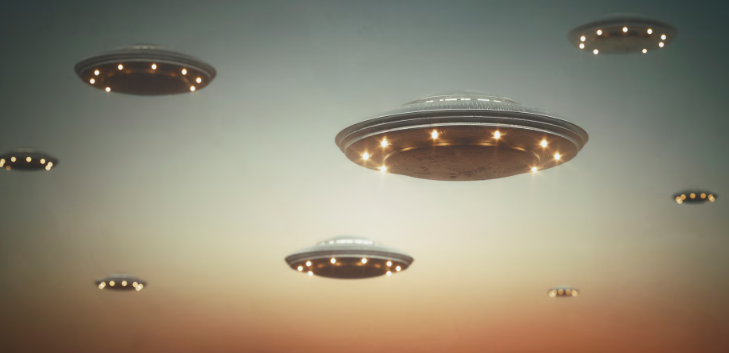Physical Address
304 North Cardinal St.
Dorchester Center, MA 02124
Physical Address
304 North Cardinal St.
Dorchester Center, MA 02124


In an era where the search for extraterrestrial intelligence (SETI) has progressed from fringe science to mainstream astrophysics, a recent discovery has caught the eye of astronomers and alien enthusiasts alike. Seven stars, located light-years away from Earth, exhibit light patterns that could hint at the presence of alien megastructures. These unusual dimming patterns have prompted some researchers to consider the possibility of advanced alien civilizations employing substantial, technology-driven constructions, potentially for energy harvesting. But how plausible are these claims?
Alien megastructures refer to enormous constructions potentially built by highly advanced civilizations, classified as Type II on the Kardashev scale. One of the most popular hypothetical examples is the Dyson Sphere—a massive shell or swarm of satellites encircling a star to capture its energy. The rationale behind this theory is that as civilizations progress, their energy requirements grow exponentially, necessitating more efficient energy harvesting techniques.
The seven stars under scrutiny were observed by the Kepler Space Telescope, which has a primary mission to find Earth-like planets in the habitable zones of their stars. The stars include:
Each of these stars exhibited light curves—graphs that show the brightness of a star over time—that were inconsistent with conventional explanations like planetary transits or stellar phenomena.
While the idea of alien megastructures is stimulating and captures the popular imagination, the scientific community approaches such claims with caution. Several theories exist suggesting natural explanations for the unusual dimming patterns:
A plausible natural explanation is the presence of irregularly shaped dust clouds or swarms of comets passing in front of the stars, causing the observed dimming. The variability and complexity in the light curves could be attributed to the erratic nature of these celestial objects.
Another possibility is intrinsic stellar activity. Stars can undergo pulsations and other dynamic processes that might result in periodic dimming. For example, young, variable stars can exhibit these characteristics due to the process of settling into a main-sequence phase.
Lastly, the anomalies could simply result from instrumental artifacts. Space telescopes and detectors are susceptible to noise and technical glitches, sometimes leading to misleading data. Engineers and scientists work rigorously to calibrate their instruments, but no system is entirely immune to errors.
Given the significant implications of confirming extraterrestrial megastructures, follow-up observations using different instruments and methodologies are crucial. Ground-based telescopes, infrared arrays, and even future missions like the James Webb Space Telescope could provide additional insights. By collecting multi-wavelength data and employing different observational techniques, researchers aim to rule out or confirm the alien megastructure hypothesis.
The pursuit of alien megastructures also dovetails into broader existential questions encapsulated by the Fermi Paradox: If intelligent extraterrestrial civilizations exist, why haven’t we found compelling evidence yet? The detection of alien megastructures could be a potential answer, signifying that advanced civilizations might prefer to harvest energy discreetly rather than emit high-powered signals.
If future research confirms the existence of alien megastructures, the implications would be profound:
For now, the next logical steps involve extensive data collection and comparative analyses. Scientists will continue to monitor these seven stars and others with unusual light curves. The utilization of machine learning algorithms to sift through astronomical data might also aid in identifying patterns previously overlooked.
The possible detection of alien megastructures around seven stars is a tantalizing prospect that has sparked both excitement and skepticism. While natural explanations seem more likely at this stage, the quest for understanding these celestial phenomena continues. Whether they are the products of cosmic dust, stellar activity, or indeed the fingerprints of advanced alien civilizations, their study is crucial for expanding our astronomical knowledge.
What do you think about these findings? Do you believe in the possibility of such extraterrestrial constructs, or are you more inclined to trust conventional scientific explanations? Share your thoughts in the comments below and become a part of this thrilling discourse.